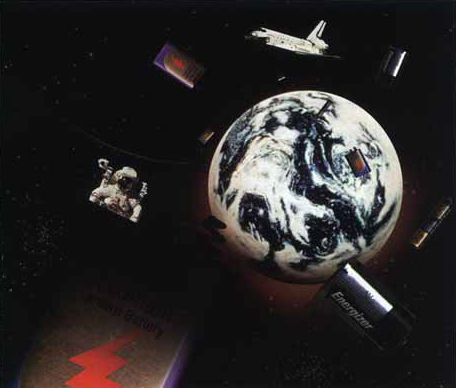ARTICLES
Advance Search
Aquatic Health
Aquatic Health, Fitness & Safety
Around the Internet
Aquatic Culture
Aquatic Technology
Artful Endeavors
Celebrity Corner
Life Aquatic
Must-See Watershapes
People with Cameras
Watershapes in the Headlines
Art/Architectural History
Book & Media Reviews
Commentaries, Interviews & Profiles
Concrete Science
Environment
Fountains
Geotechnical
Join the Dialogue
Landscape, Plants, Hardscape & Decks
Lighter Side
Ripples
Test Your Knowledge
The Aquatic Quiz
Other Waterfeatures (from birdbaths to lakes)
Outdoor Living, Fire Features, Amenities & Lighting
Plants
Ponds, Streams & Waterfalls
Pools & Spas
Professional Watershaping
Structures (Editor's Notes)
Travelogues & History
Water Chemistry
WaterShapes TV
WaterShapes World Blog
Web Links
Around the Internet
Aquatic Culture
Aquatic Technology
Artful Endeavors
Celebrity Corner
Life Aquatic
Must-See Watershapes
People with Cameras
Watershapes in the Headlines
As watershapers, we can look at the rest of the architectural world and see that every other genre is benefiting more than we are from computers. Bridge builders and skyscraper architects use computers to do everything from the simulated testing of three-dimensional structural models to the generation of detailed blueprints to be used on site. Even the designers of modest housing developments are now using computers to conduct 3-D virtual tours for prospective homebuyers and in specifying floor plans and
Believe it or not, I became involved with this project because my nine-year-old daughter, Savannah, plays tackle football. I was watching one of her games when I overheard a teammate's father talking about a renovation at the Palm Beach Zoo. Joining the conversation, I learned that he owned a general contracting company that builds large commercial projects and that he'd been hired to renovate the zoo's parking lot and utility infrastructure and build an exhibit facility for two Bengal tigers. It was, he told me, the first phase of a long-term plan to upgrade the zoo at Dreher Park, a complex that also includes a planetarium and a museum. The work at the zoo, he said, was one phase of an effort by the city to create a quality facility that ultimately could serve as a low-cost alternative to Orlando's theme parks. As part of the project, my new friend's firm also was acting as general contractor in the construction of a new tiger pen, the first of a series of new display areas planned for the modest zoo. When he talked about the watershapes involved, I jumped: The design
We're all advised to change the batteries in our smoke detectors once each year. This is truly good and affordable advice, and most of us are happy to comply. If you were to decide on a whim to replace all of the batteries in all of your battery-powered appliances or other devices that incorporate battery backup in their design on that mandated day, however, you might find the number of replacements surprising, the day a long one and the
Is one person's trash really another person's treasure? That's a concept we tested on a recent Surprise Gardener episode, where we ran into a strange backyard "centerpiece" and, as the designer with final say, I had to decide whether to cover the thing up or make it stand out. The challenging objet d'art was an old truck chassis, abandoned and sunk into the yard many years before. Because of its location, it was something of a focal point. The homeowner had tried sticking an old whiskey barrel in the middle of the truck as a planter in hopes of
Frank Lloyd Wright once said that architecture is the art form to which all others subordinate. That's a bold comment from a man whose amazing achievements were matched only by
As is the case with a stream's aesthetics, the functionality of any multi-level, gravity-driven waterway must be considered from the outset of any project. After all, no matter how natural and beguiling a stream may be in appearance, if it doesn't hold water, work properly in terms of hydraulics and filtration or provide ecological balance, the whole thing can and will become a nightmare. Fortunately, making streams work isn't all that difficult - as long as you keep your eye on a critical set of fundamentals. Last time, we laid out the stream course, created
For some time now, watershapers have exploited the fact that naturally occurring rocks and boulders can enhance the appearance of their work. Whether used in conjunction with artificial rock or alone, you appreciate the fact that rock comes in a never-ending variety of shapes, sizes and textures - and that they can be used to add both surprise and individuality to designs. For the most part, however, designers and builders have tended to work with common local stones - fieldstone, granite or river rock - that limit their palettes when it comes to color, visual appeal and expressiveness. It can indeed be an epiphany for those who've used common stones to come across material that includes complex mineral and crystalline structures or fascinating patterns of stratification that are the product of eons of metamorphic activity within the earth's crust. With this awareness comes the realization that the palette is virtually limitless and that rockwork can now easily be found to echo the colors and exceptional nuances found in
Ever since the hydraulic principles of ancient Persia were 'rediscovered' by Europeans during the Renaissance, the sky has literally been the limit for watershape designers. At the 17th-century Dutch Palace of Het Loo, for example, fountain jets that trace their developmental history at least as far back as 8th-century Persia make an emphatic statement about the power of those who commissioned them. We all marvel, and rightly so, at the waterfeatures of Renaissance Italy, the pools of Versailles in France, the fountains of the






















Wanted: Water Artists